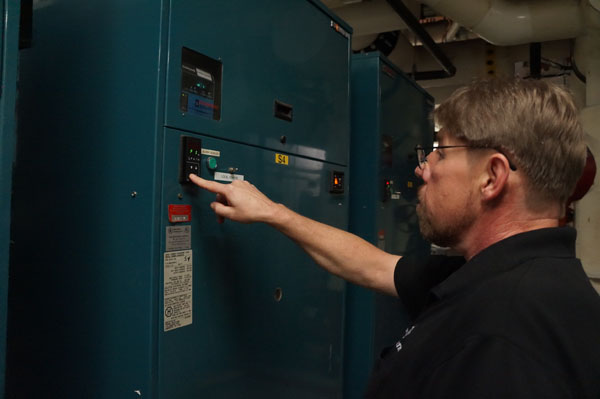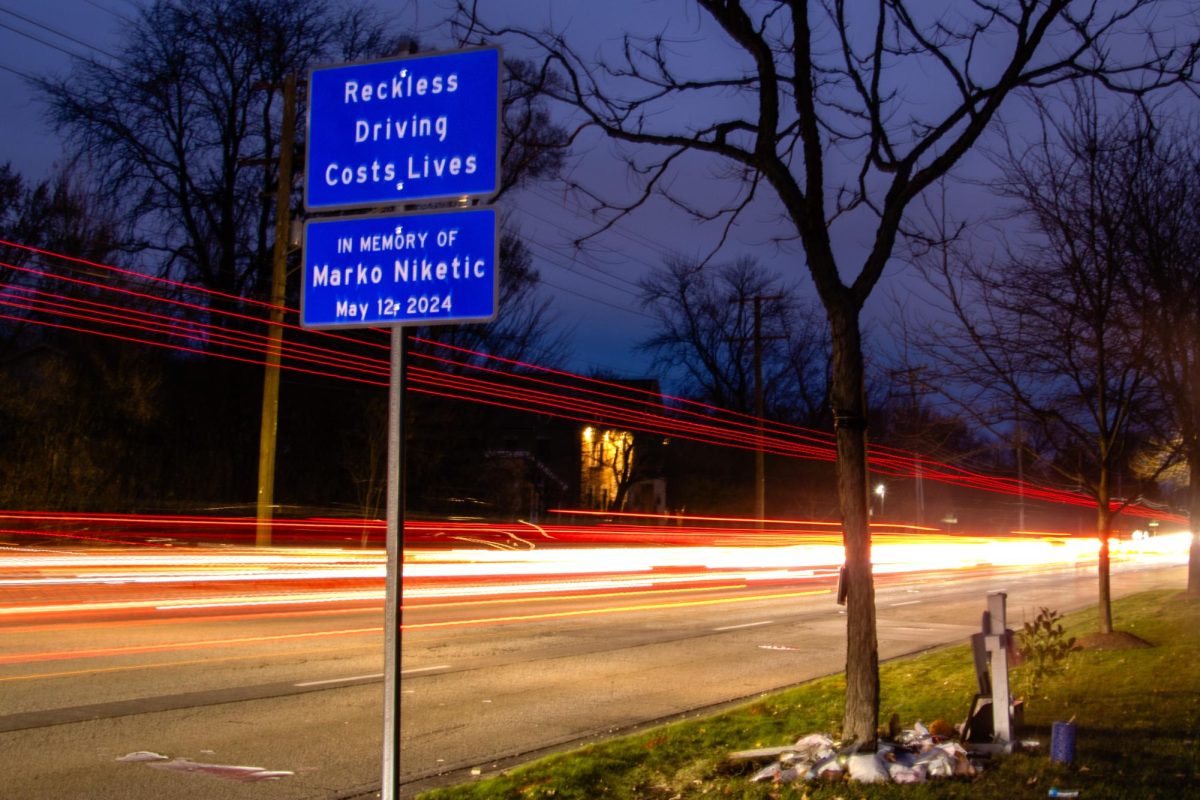South and North were recognized as highly efficient in a recent energy audit conducted this spring by EnerNOC, Inc., an energy consulting firm, according to a Sept. 10 District 225 press release.
The press release stated that the purpose of the study was to identify energy-savings measures in the schools.
Principal Dr. Brian Wegley said that the finding wasn’t a surprise.
“Over the past several years, we have saved millions of dollars in energy,” Wegley said.
Associate Principal Gary Freund said efforts to reduce energy began around five years ago as part of a nationwide shift to energy conservation.
According to Freund, improvements included new windows in the library and other rooms as well as the installation of auto-sensors in hallways and rooms that turn the lights off if they are empty. The vending machines have been upgraded with sensors to lower energy usage when school isn’t in session.
Mike Calucci, South’s plant operator, described how three old and inefficient hot water boilers were replaced with more efficient technology.
“We took those three boilers out and put in 10 small, little boilers that you wouldn’t even know was a boiler–looks like an oversize refrigerator,” Calucci said. “These run at 85 percent efficiency, and they stage on as heat is needed. So, of all those 10 boilers, if we only need one of them to heat the building, only one will go on. If we need three because it gets colder, two more will come on.”
The school’s fluorescent emergency lights were replaced over the summer with new LED lighting, according to Dean Krock, assistant plant operator.
According to Krock, the efficient ways that the South maintenance staff run the school’s air handlers, which provide heating and cooling to the building, contribute greatly to energy savings.
“On average, any given week here…we have between 50 and 60 extracurricular after-school events,” Krock said. “And instead of just turning the equipment on and leaving it on all day till 10, 11 o’clock at night, we go in [every day] and adjust the schedules based on what’s going to be used…By doing this you don’t have a lot of wasted run time, and that also cuts down on the wear and tear on the equipment.”
The district press release acknowledged South and North’s maintenance staff for their integral role in energy savings.
“It was cited that the maintenance staff do an exceptional job in operating the schools in a highly efficient manner,” Dr. Kim Ptak, director of operations for District 225, said. “The auditors claimed our staff [does] one of the best jobs with on-going maintenance of any schools they have visited.”
Krock said that many of the audit’s typical recommendations, to fix issues with improperly maintained systems, did not apply to South.
“Through a lot of hard work from our maintenance department here, our guys get preventative maintenance work orders on a monthly basis,” Krock said. “They make repairs before they start getting out of hand – you know, as things come up they’re taken care of immediately, and this helps tremendously.”
Other Chicagoland schools are also investing in new energy infrastructure. Niles Township 219 has been improving efficiency for the past few years.
In 2011, Niles West was one of the first five high schools in the country to be awarded Leadership in Energy and Environmental Design (LEED) for Existing Buildings: Operations & Maintenance certification, according to the Skokie Patch.
Niles West was also awarded an Energy Star certification from the Environmental Protection Agency in 2010, according to the Skokie Patch, meaning that it is in the top 25 percent of similar school buildings in energy efficiency nationwide.
North has also been participating in the district-wide initiative and had an audit completed similar to South’s audit, according to the press release. The audit identified 12 core areas for improvement within North for the future.
The South audit listed seven principal recommendations involving the ventilation and chilled water systems.
According to Ptak, such measures could be costly to implement, but most of their savings would balance the costs in less than 18 months.
According to Freund, South will continue its energy savings, starting by replacing the lighting in the main gym over the next summer.
“Every dollar we can save, obviously, are dollars that go to students, so our goal is to save as much as we can on the infrastructure side of things, on an ongoing basis,” Wegley said.







